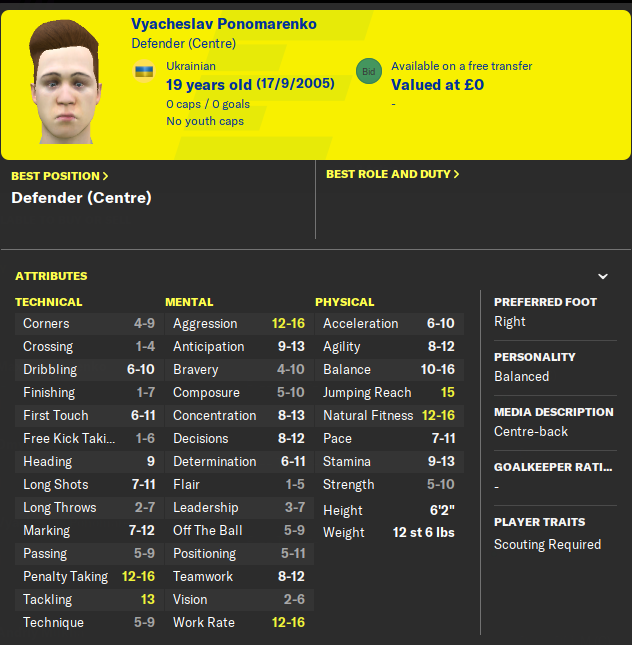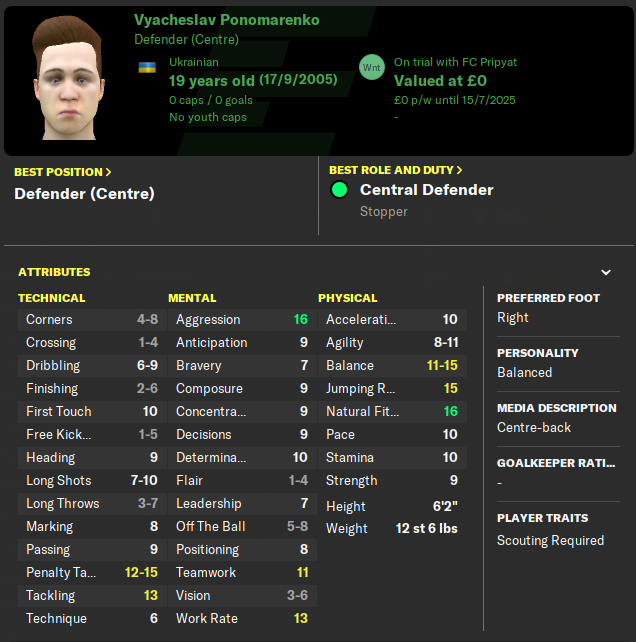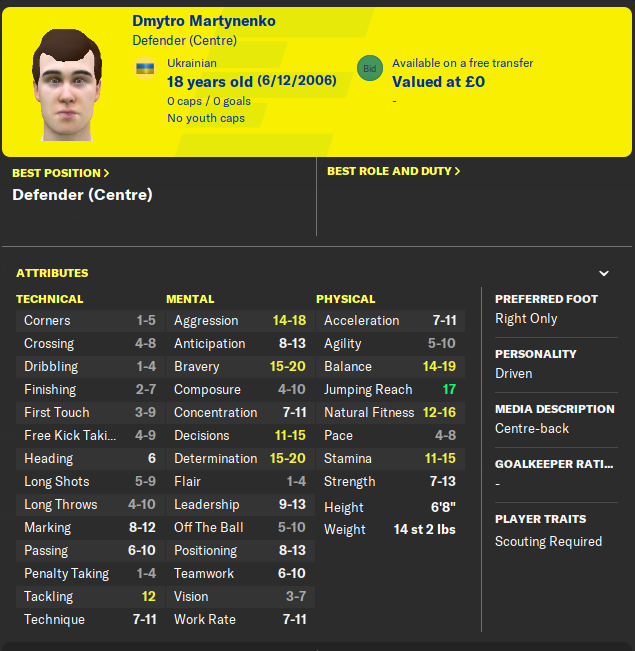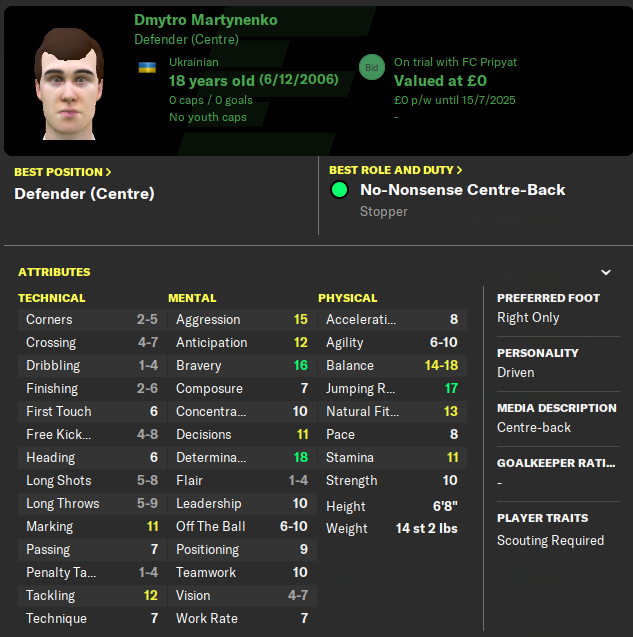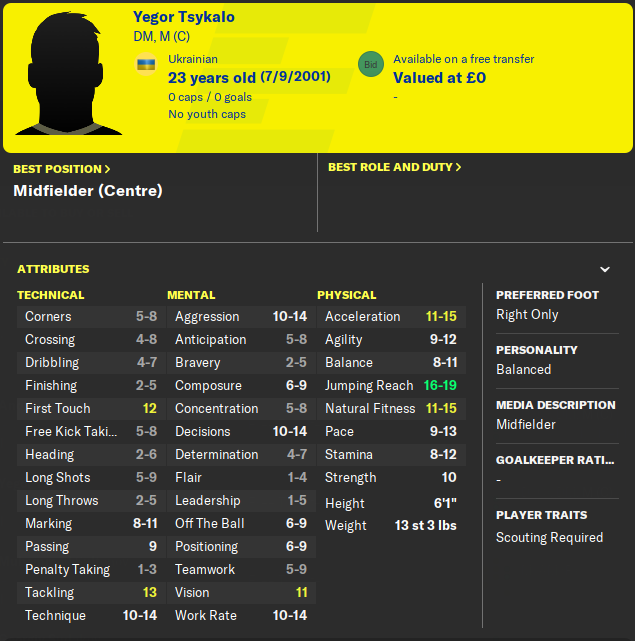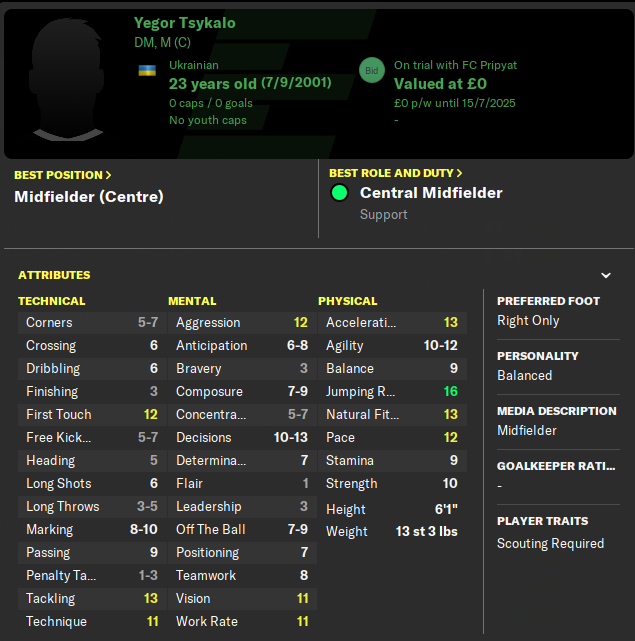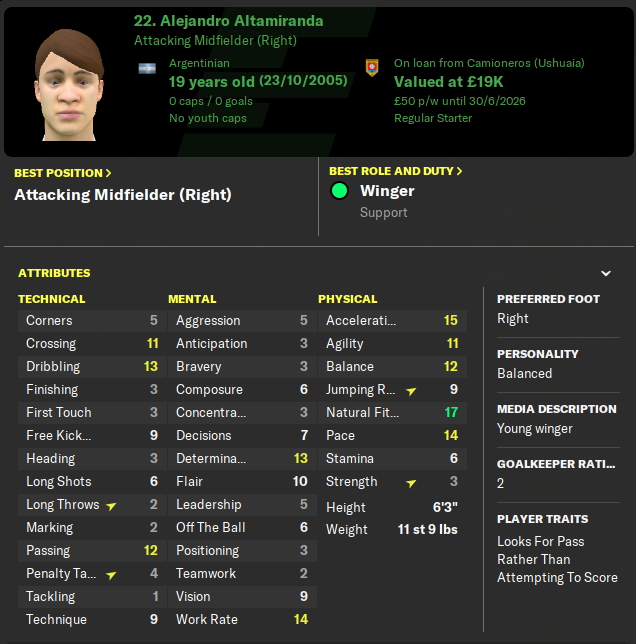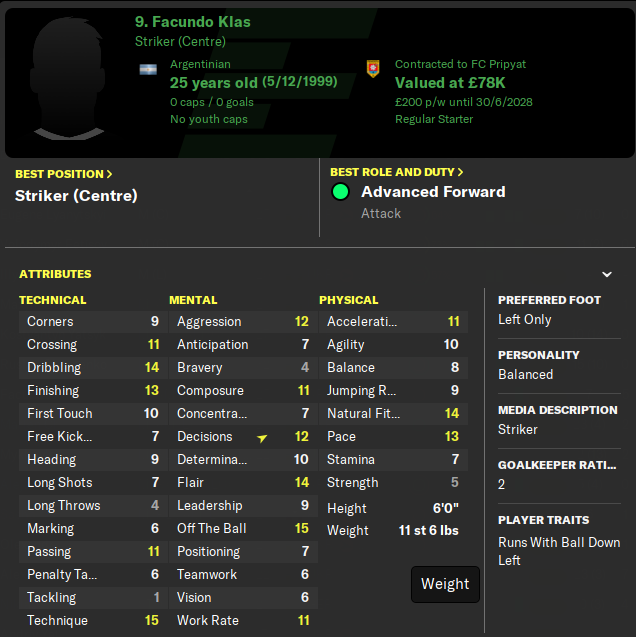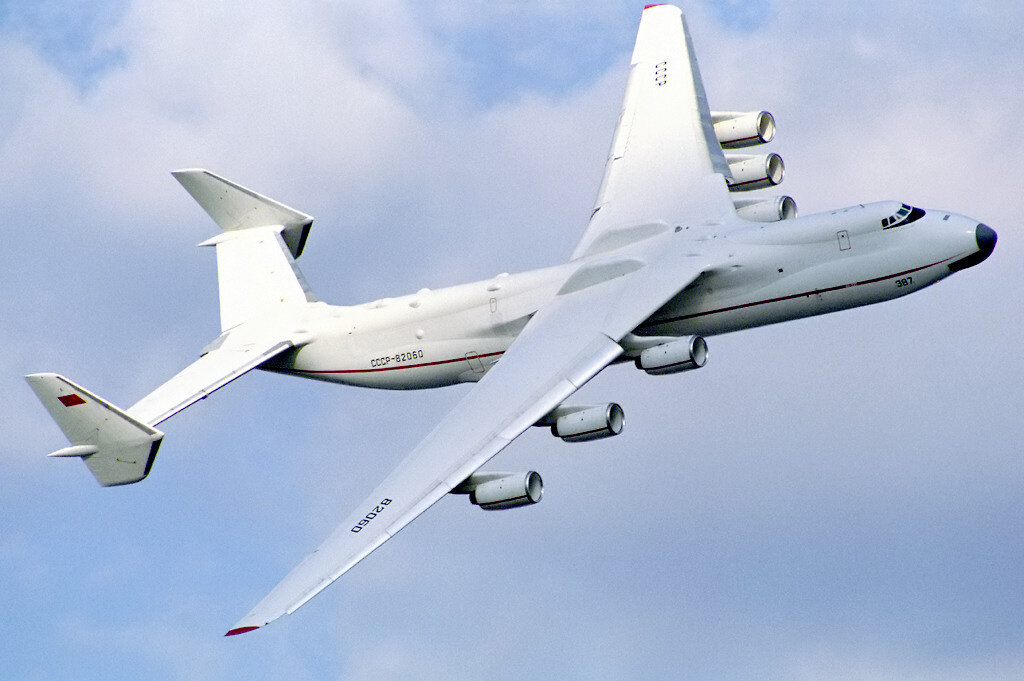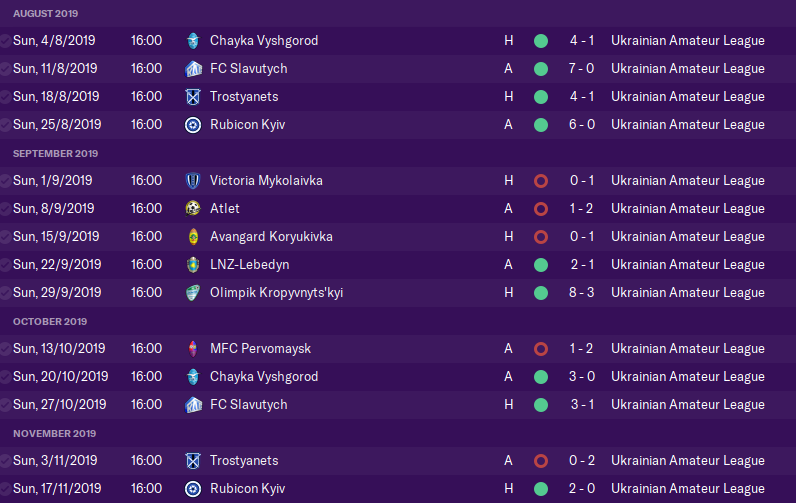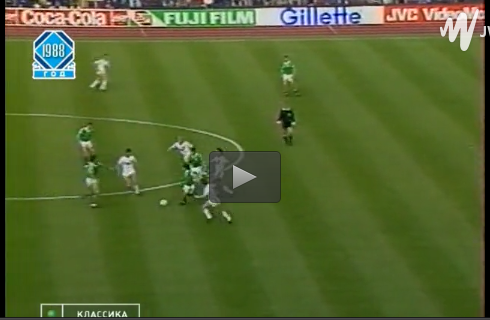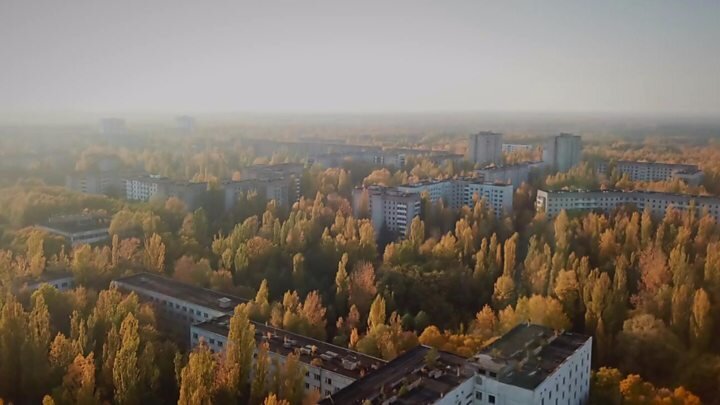Welcome to season nine in Pripyat, our final season. Chepiga's last chance to complete his mission to get FC Stroitel Pripyat promoted to the Premier Liha. A sixth placed finish in season eight needed to be significantly bettered if he was to avoid the bullet.
As has become the norm, I have split the season into three bitesize sections. Summer, Autumn, and Spring. There is no football in Ukraine over the Winter for obvious climatic reasons.
Summer
A decent start to the season, I say start, but in reality almost half of our league games are squeezed into July and August. As the seasons have gone on I have learnt to really focus attention around these two months. A short term loan, or a highly paid free agent, could be all you need if they can just give you two months of service. One thing I have never had in this save is the squad depth to rotate effectively. The drop off in quality is so great that too much rotation can easily lead to an unexpected defeat; see Minaj 7th August. We finished the Summer in 8th place.
Autumn
Three wins, three draws, and three defeats is fine, but unlikely to be enough to get us promoted. The goals of Eugene Medvedchuk were becoming more and more important.
Chepiga spent the long four month Winter break plotting his escape should things fail to improve. Pripyat only sat 6th at this point, with only nine games of the save remaining.
Spring
A fantastic run to end the save saw Pripyat push towards the promotion playoff and we really did have an outside chance of making it. With four games to go Pripyat were nine points adrift. A perfect final four games might be enough. Kolos Kovalvika were sitting 4th when we, along with 98 loyal fans, traveled to Kolos. Victory for Pripyat was not only necessary, but it would put us in prime position for that elusive playoff spot that 3rd position would give.
An 18th minute sending off certainly didn't help matters. Even a hat trick from in form striker Medvedchuk wasn't enough to save us as we found ourselves 2-0 at half time, and 4-1 down after only 53 minutes.
This defeat put paid to any talk of promotion, in any realistic sense, and while we won our last three games it wasn't enough. Our final season ended in a disappointing 4th place position six points off 3rd. This did equal our best performance across the save, so perhaps this is a good place to stop after all.
End of season awards
Rather pleasingly Eugene Medvedchuk ended the season as Persha Liha top scorer with 18 goals in 30 starts and an average rating of 7.08, this is a first for us and if the save was to continue I am sure he would have a large part to play in our future. A number of Permier Liha clubs have watched him this season so perhaps we would lose him anyway, we will never know.
As for the supporters awards it is rather pleasing that two players from our academy made the supporters team of the year. These are left winger Sasha "Alan" Chepiga, son of our main protagonist, Ruslan Chepiga. Sasha came through our second intake and his development hasn't been great. To be honest I probably haven't followed him closely enough, especially for the #narrative. But in any event he made it and it is somewhat pleasing to see.
The second player to make it through our academy is the only one with Pripyat as his place of birth right back, Olexandr Kovelskyi. I love reliable full backs, Denis Irwin, Gary Neville, Stuart Pearce, Lee Dixon, those type of players are invaluable to a successful squad and Kovelskyi was my Lee Dixon. Rarely did anything flash and rarely let us down. Even at 21 he was already a team leader and one of the first names on my team-sheet.
The end of save round-up
At this point of a normal save the author would look back over their save and discuss the progression they made and check out some old players. In truth I wanted to do this, I even had a wee graphic made, but Pripyat has seen absolutely no real club development whatsoever.
We still only have one scout and an assistant manager as backroom staff. Our facilities are still....shite
We are in debt to the tune of 500k and have been from the end of Season One. If Chepiga had spent all the wage budget offered to him the club would've gone bust many years ago.
So there you have it, the save has come to an end. I enjoyed it, it certainly was a challenge but I am looking forward to playing a 'vanilla' version of the game in FM21. I hope to have a post out next week about my plans for the new game, so keep an eye out for that.
So what happened to Chepiga, he had failed to deliver promotion to the Premier Liha after all...
Chepiga, the end?
Like his predecessor, Viktor Bryukhanov before him, he had failed his primary mission objective of Rebuilding Pripyat. The city would once again become a modern day Pompeii, any hopes and dreams of redemption were left unfulfilled.
He had lost favour with everyone in Moscow, and just this morning a black crow landed on his window ledge with a message, Hugo Ojeda was alive. Time was beginning to loosen many tongues, and without Russia's protection, all his enemies would soon come knocking.
Chepiga, as you would expect, already had his escape planned should this scenario ever come to pass. There remained one country on Earth where Chepiga held value, a country so large he could hide there undetected, the United States of America. If, or more likely when, he was exposed he could sell his secrets to the Americans in exchange for sanctuary. There remained one small problem, how to get in.
The answer was simple, one last clandestine operation into Russian America (now known as Alaska.)
The US Acquisition of Russian America
For those that might be unaware the American state now known as Alaska was originally colonized by the Russians (the word Alaska is derived from Russian) in the mid 18th Century after initial expeditions found a large population of Sea Otters that could be culled for their quality fur. The initial colonisation by Russia did not advance much further than a few forts along the coast, it wasn't until the early 19th Century that Russia expanded it's influence to include most of the area we know as Alaska today.
In the aftermath of the Crimean War (1853-1856) with Great Britain (and others), Russia became increasingly concerned about the threat of a Pacific coast invasion from the British Crown Dependency of British Columbia, in present day Canada. Russian America and Siberia would prove costly to defend against such an attack from a large military superpower, money that the Russian Empire could ill afford to waste.
Around 1865 Russia started to look into the idea of selling Russian America. It may seem a silly decision through a modern day lens, but the idea of selling Russian America to, the relatively recently formed, United States of America wasn't such a bad idea back then. Having a friendly sovereign nation act as buffer between Russia and a common foe, Great Britain in this case, made perfect political sense.
Any invasion of mainland Russia from British Columbia would now have to first go through the United States. Britain had only some 80 years previous, lost the American War of Independence (1775-1783) and would be unlikely to try and provoke a repeat.
So a price of $7.2 million ($132 million in today's money) was agreed which roughly equated to 2 cents per acre. This may seem cheap, and it is, but when put into context of the time, the benefits of the sale were seen as priceless to the Russian Empire.
So perhaps Donald Trump's idea of buying Greenland from Denmark was not as far fetched as some may think. There is a race to secure rights to the Arctic Ocean as the Ice retreats further and further making exploitation more affordable. I can certainly see the American presence on Greenland growing over the next 100 years, which is the time frame any self respecting geo-political strategist works in.
Just to round off the crazy American theme, Sarah Palin was right by the way, there are islands off Alaska were you can clearly see Russian territory.
A hastily arranged bogus testimonial away in the depths of Siberia was enough to get Chepiga just two days hike from the coast, from there an American registered Cessna would collect him at dawn on the third day. Flying under the radar, and with the glaring Sun behind them, the Russians would not detect their transgression.
The hike was cold, much colder than the last time Chepiga was here fifteen years ago, or so it seemed to his aging body. This was a different cold, it was ubiquitous, people talked about getting a chill to the bone, Chepiga was sure he could feel his marrow freezing with every shuffling step he took.
He had always felt looking across the Bering Strait was like looking into the future. This was now more true than ever. As his plane approached, a strange feeling welled up inside him, it was nerves, as soon as he crossed the 'Ice Curtain' there could be no return.
Once across the international date line, a few false documents would be all he needed to pass the porous border check at the small airfield in Tin City, Alaska. Chepiga would enter as a migrant miner, from there the rest of the US was wide open, he would be free.
End note: Thanks for making it this far and for following along my, SARS-CoV-2 interrupted, FM20 journey. I have decided to park Ruslan Chepiga for FM21. I have genuinely, thoroughly enjoyed writing, and thinking about him over the last two years but it is time for a break. I may or may not bring him back in the future, we shall see.
I have decided on a save for FM21 which I hope to write about sometime next week. As ever it will feature some history and politics as I know more about that than actual FM.
In the meantime here are a few clues about the country I'll be managing in. A prize of 0% discount on FM21 to the first person to guess where I am going.
This country has a temperate, maritime climate, predominantly influenced by air masses from the Atlantic.
This country has three official languages, none of which are derived from the country's actual name.
This country claims to have invented French Fries (*other sources dispute this claim).
Over and out
FMEadster!

